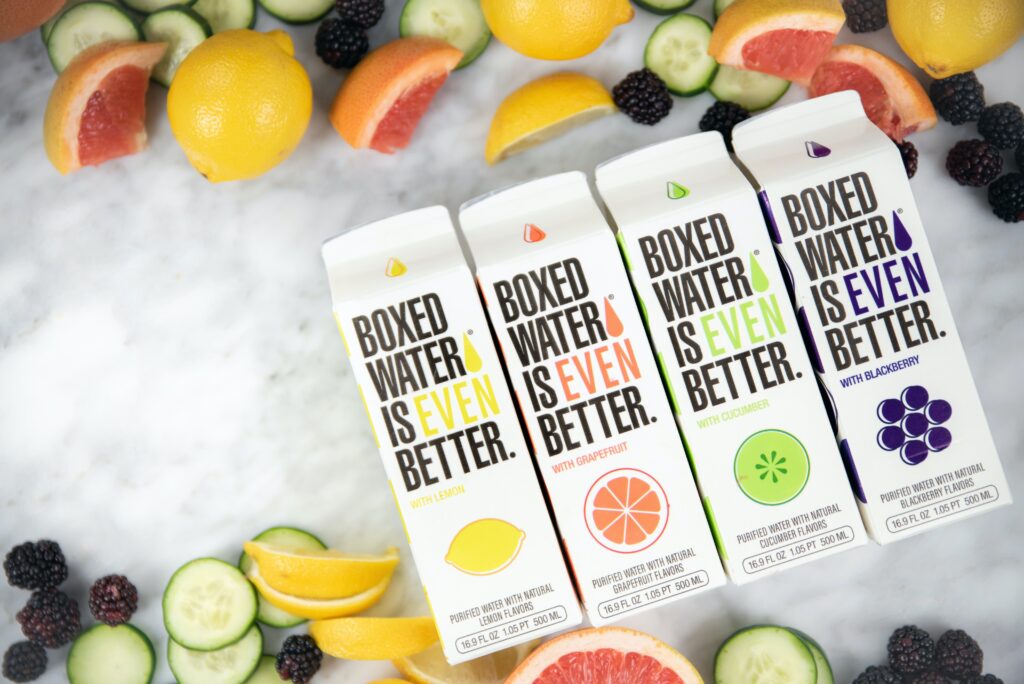Are you looking to boost your intake of fruits and vegetables but not sure where to start? Incorporating these nutritious and colorful options into your daily diet doesn’t have to be a daunting task. With a few simple tips and tricks, you can easily transform your meals and snacks to include more of these essential food groups. Whether you’re a picky eater or just looking for some new ideas, this article will provide you with easy ways to increase your fruit and vegetable intake, helping you achieve a healthier lifestyle.
Benefits of Including More Fruits and Vegetables in Your Diet
Improved overall health
One of the main benefits of including more fruits and vegetables in your diet is improved overall health. Fruits and vegetables are packed with essential vitamins, minerals, and antioxidants that are vital for maintaining good health. They provide key nutrients that support various bodily functions, such as promoting healthy digestion, boosting immune function, and aiding in weight management. By increasing your intake of fruits and vegetables, you can improve your overall health and well-being.
Increased energy levels
Incorporating more fruits and vegetables into your diet can also result in increased energy levels. Fruits and vegetables are natural sources of carbohydrates, which are the body’s main source of energy. The fiber content in fruits and vegetables helps regulate blood sugar levels, preventing energy crashes and promoting sustained energy throughout the day. By fueling your body with nutrient-dense fruits and vegetables, you can experience higher energy levels and improved mental clarity.
Enhanced immune system
Another benefit of including more fruits and vegetables in your diet is enhanced immune system function. Fruits and vegetables are rich in vitamins A, C, and E, as well as other antioxidants, which play a crucial role in supporting a healthy immune system. These nutrients help strengthen your body’s defenses against infections and diseases, reducing the risk of falling ill. By incorporating a variety of colorful fruits and vegetables into your meals, you can give your immune system a boost and reduce the likelihood of getting sick.
Reduced risk of chronic diseases
Including more fruits and vegetables in your diet can also help reduce the risk of chronic diseases. Numerous studies have shown that a diet rich in fruits and vegetables is associated with a lower risk of conditions such as heart disease, stroke, certain types of cancer, and obesity. The high fiber content in fruits and vegetables can help lower cholesterol levels and maintain a healthy weight, while their antioxidant properties protect against cellular damage that can lead to chronic diseases. By prioritizing fruits and vegetables, you can take proactive steps towards preventing these health conditions.
Setting Goals for Increasing Fruit and Vegetable Intake
Determining your current intake
Before you can set goals for increasing your fruit and vegetable intake, it’s important to determine your current intake. Take some time to evaluate your eating habits and assess how many servings of fruits and vegetables you typically consume in a day or week. This will serve as a baseline for measuring your progress and help you set realistic goals for improvement.
Setting realistic goals
Once you’ve determined your current intake, it’s time to set realistic goals for increasing your fruit and vegetable intake. Start by identifying a target number of servings you’d like to aim for each day. The recommended daily intake is typically around 5 to 9 servings of fruits and vegetables combined. However, it’s important to set goals that are feasible for your lifestyle and dietary preferences. Gradually increase your intake over time, aiming to add an additional serving or two each day until you reach your target.
Tracking progress
To stay motivated and hold yourself accountable, consider tracking your progress towards your fruit and vegetable intake goals. Keep a food diary or use a smartphone app to record the types and amounts of fruits and vegetables you consume each day. This will help you visualize your progress and identify areas for improvement. Additionally, tracking your progress can provide a sense of accomplishment as you see the positive changes in your eating habits.

1. Start Your Day with Fruits and Vegetables
Add fruit to your breakfast cereal or yogurt
One easy way to incorporate more fruits and vegetables into your diet is by adding them to your breakfast meals. Instead of having a plain bowl of cereal or yogurt, enhance the flavor and nutritional value by adding sliced fruits such as berries, bananas, or diced apples. The natural sweetness of fruits will add a burst of flavor, while also providing essential nutrients to kick-start your day on a healthy note.
Include veggies in your omelet or smoothie
Another option is to include vegetables in your morning omelet or smoothie. Sauté some spinach, bell peppers, onions, or any other veggies of your choice and fold them into your omelet. The combination of eggs and vegetables will provide a protein-packed and nutrient-rich breakfast. Alternatively, blend vegetables like kale, cucumber, or carrots into your smoothies for an added dose of vitamins and minerals.
Have a piece of whole fruit as a snack
If you’re looking for a quick and simple way to include more fruits in your diet, having a piece of whole fruit as a snack is an excellent choice. Keep a variety of fruits, such as apples, oranges, grapes, or bananas, readily available for a convenient and nutritious snack option. Fruits are not only refreshing and delicious, but they also provide a good source of fiber and natural sugars, giving you a healthy energy boost throughout the day.
2. Experiment with Different Cooking Methods
Grill or roast vegetables for added flavor
Cooking vegetables doesn’t have to be boring. By grilling or roasting vegetables, you can enhance their flavor and add a touch of smokiness. Cut vegetables like zucchini, eggplant, bell peppers, or cauliflower into bite-sized pieces, toss them with olive oil, salt, and pepper, and then grill or roast them until they are tender and slightly caramelized. The result is a delicious side dish or a flavorful addition to salads and sandwiches.
Steam vegetables to retain nutrients
If you’re aiming to retain the maximum amount of nutrients in your vegetables, steaming is an ideal cooking method. Steaming vegetables helps preserve their vitamins and minerals, as well as their natural colors and flavors. Invest in a steamer basket or use a microwave-safe dish with a little water to steam vegetables such as broccoli, carrots, or green beans until they are tender yet still crisp. Enjoy them as a simple side dish or incorporate them into a variety of recipes.
Try stir-frying for a quick and healthy meal
Stir-frying is a fantastic cooking method that allows you to quickly cook vegetables while retaining their nutrients and vibrant colors. Heat a bit of oil in a wok or skillet, add your favorite vegetables, and cook them over high heat, constantly stirring, until they are crisp-tender. You can mix and match a variety of vegetables like bell peppers, snap peas, mushrooms, and baby corn to create a colorful and nutritious stir-fry. Serve it over rice or noodles for a satisfying meal.

3. Sneak Fruits and Vegetables into Meals
Add grated vegetables to pasta sauces or meatloaf
To boost the nutritional value of your favorite meals, try adding grated vegetables to pasta sauces or meatloaf recipes. Grate vegetables like carrots, zucchini, or bell peppers and incorporate them into your homemade pasta sauce for added texture and nutrients. You can also mix grated vegetables into your meatloaf mixture before baking. Not only does this add moisture, but it also sneaks in some extra servings of vegetables.
Blend vegetables into soups or stews
If you’re not a fan of eating vegetables whole, blending them into soups or stews is a great way to incorporate them into your diet. You can puree vegetables like butternut squash, sweet potatoes, or cauliflower and add them to your favorite soup or stew recipes. The pureed vegetables will add creaminess and depth of flavor while boosting the nutritional content of your meal.
Use fruit as a topping for salads or desserts
Incorporating fruits into your meals doesn’t have to be limited to savory dishes. Fruits can also be used as delicious and healthy toppings for salads or desserts. Add fresh berries, sliced peaches, or pomegranate seeds to your salads for a burst of sweetness and vibrant colors. For a sweet treat, top your favorite yogurt or ice cream with sliced fruits like kiwi, mango, or pineapple. The natural sweetness of the fruits will satisfy your cravings while providing essential vitamins and minerals.
4. Make Fruits and Vegetables More Accessible
Keep a fruit bowl on the kitchen counter
One way to ensure that you’re consuming more fruits is by keeping a fruit bowl on the kitchen counter. Make it a habit to refill the bowl with a variety of fruits on a regular basis. By placing the fruits within easy reach, you’re more likely to grab them as a quick snack or incorporate them into your meals. The colorful display of fruits can also serve as a visual reminder to include them in your daily diet.
Pre-cut and store vegetables for easy snacking
To make vegetables more accessible for snacking, pre-cut and store them in the refrigerator. Cut up vegetables like carrots, celery, or bell peppers into bite-sized pieces and store them in airtight containers or resealable bags. Whenever you’re feeling hungry, you can easily grab a portion of pre-cut vegetables for a quick and nutritious snack. This eliminates the barrier of preparation and encourages you to choose vegetables over less healthy options.
Stock up on frozen or canned fruits and vegetables
If fresh produce is not always readily available or you struggle with keeping fruits and vegetables from spoiling, consider stocking up on frozen or canned options. Frozen fruits and vegetables are flash-frozen at their peak freshness, locking in nutrients. They can be easily added to smoothies, soups, or stir-fries. Canned fruits and vegetables can also be a convenient option, just ensure that you choose varieties without added sugars or excess sodium.

5. Incorporate Salads and Sides into Every Meal
Include a side salad with lunch and dinner
A simple and effective way to include more vegetables in your diet is by incorporating a side salad with your lunch and dinner. Start your meals with a refreshing salad filled with leafy greens, such as spinach or arugula, and top it with an assortment of colorful vegetables. Try adding cherry tomatoes, cucumber slices, shredded carrots, or avocado. Experiment with different dressings to find flavors that complement your salads and make them more enjoyable.
Opt for vegetable-based sides like roasted Brussels sprouts or steamed broccoli
Instead of relying solely on starchy side dishes like mashed potatoes or rice, opt for vegetable-based sides to accompany your meals. Roasted Brussels sprouts, steamed broccoli, or sautéed asparagus are excellent choices that add color, flavor, and nutrients to your plate. Season them with herbs, spices, or a squeeze of lemon juice for added taste. These vegetable sides will provide a healthy balance to your meal while leaving you satisfied.
Try different salad dressings and toppings for variety
To make your salads more enticing, experiment with different dressings and toppings. Look for homemade dressings or choose store-bought options that are low in added sugars and unhealthy fats. Some popular choices include balsamic vinaigrettes, lemon tahini dressings, or simple olive oil and vinegar combinations. Additionally, you can jazz up your salads with a variety of toppings like nuts, seeds, dried fruits, or crumbled cheese. This variety will keep your salads flavorful and prevent them from becoming monotonous.
6. Make Fruit and Vegetable Smoothies
Blend a variety of fruits and vegetables for a nutritious drink
Smoothies are a fantastic way to combine multiple fruits and vegetables into one delicious and nutritious drink. Experiment with different combinations of fruits and vegetables to find flavors that you enjoy. Some popular options include banana and spinach, pineapple and kale, or mixed berries and beets. Blend the fruits and vegetables together with a liquid of your choice, such as coconut water or almond milk, until smooth and creamy. This will result in a refreshing and nutrient-packed beverage that can replace a meal or serve as a healthy snack.
Add leafy greens like spinach or kale for extra nutrients
To boost the nutritional content of your smoothies even further, consider adding leafy greens like spinach or kale. Leafy greens are packed with vitamins, minerals, and fiber, making them a great addition to your smoothie routine. The natural sweetness of fruits will help mask the taste of the greens, creating a flavorful and nutrient-dense blend. Start with a small handful of spinach or kale and gradually increase the amount as your taste buds adjust.
Experiment with different flavor combinations
Don’t be afraid to get creative with your fruit and vegetable smoothies by experimenting with different flavor combinations. Mix and match your favorite fruits and vegetables to create unique and exciting blends. Consider adding herbs like mint or basil for an extra burst of freshness. You can also incorporate spices like cinnamon or ginger to add depth of flavor. By continually trying new combinations, you’ll keep your smoothies interesting and enjoyable.
7. Substitute Fruits and Vegetables for Unhealthy Options
Replace chips with carrot sticks or cucumber slices
When it comes to snacking, many people reach for processed snacks like chips or cookies. However, you can easily substitute these unhealthy options with nutrient-rich fruits and vegetables. Instead of reaching for a bag of chips, opt for crunchy carrot sticks or cucumber slices. They provide a satisfying crunch while offering vitamins and minerals. Dip them in hummus, tzatziki, or your favorite healthy dip for added flavor.
Use lettuce wraps instead of bread for sandwiches
If you’re looking to reduce your bread intake, consider using lettuce wraps as a healthier alternative. Replace bread slices with large lettuce leaves, such as romaine or iceberg, and use them as a wrap for your favorite sandwich fillings. This swap eliminates unnecessary carbohydrates and adds an extra serving of vegetables. Fill your lettuce wraps with lean protein, like grilled chicken or tofu, and a variety of veggies for a light and refreshing meal.
Choose fruit-based desserts instead of sugary treats
When it comes to satisfying your sweet tooth, opt for fruit-based desserts instead of sugary treats. Rather than reaching for a cookie or a piece of cake, indulge in a bowl of fresh berries or a fruit salad. You can also enjoy a fruit parfait made with layers of Greek yogurt and sliced fruits. By choosing fruit-based desserts, you’ll satisfy your cravings while reaping the nutritional benefits of fruits.
10. Get Creative with Fruit and Vegetable Recipes
Search for new recipes online
To expand your culinary repertoire and discover new ways to incorporate fruits and vegetables into your meals, search for recipes online. There are countless websites and food blogs that offer a wide variety of creative and flavorful recipes using fruits and vegetables. Whether you’re looking for main dishes, sides, or desserts, you’re sure to find recipes that suit your tastes and dietary preferences.
Modify existing recipes to include more fruits and vegetables
Another way to include more fruits and vegetables in your diet is by modifying existing recipes. Take your favorite recipes and find ways to incorporate additional fruits and vegetables. For example, if you enjoy pasta dishes, add sautéed vegetables such as mushrooms, peppers, or zucchini to the sauce. If you’re making a stir-fry, increase the vegetable-to-protein ratio by adding more colorful vegetables. By making simple modifications to your go-to recipes, you can effortlessly increase your fruit and vegetable intake.
Try international cuisines that feature abundant produce
Exploring international cuisines can open up a world of possibilities for incorporating more fruits and vegetables into your diet. Many cultures have traditional dishes that focus on fresh produce as the main ingredient. For example, Mediterranean cuisine features an abundance of fruits, vegetables, and olive oil. Lebanese cuisine offers a wide variety of vegetable-based appetizers and salads. By trying different international cuisines, you’ll not only enjoy a diverse range of flavors but also increase your fruit and vegetable consumption.
In conclusion, incorporating more fruits and vegetables into your diet has numerous benefits for your overall health. By setting realistic goals, experimenting with different cooking methods, sneaking fruits and vegetables into meals, making them more accessible, incorporating salads and sides into every meal, making fruit and vegetable smoothies, substituting unhealthy options, and getting creative with recipes, you can easily increase your fruit and vegetable intake. So start transforming your diet today and reap the rewards of a healthier and more vibrant lifestyle.
